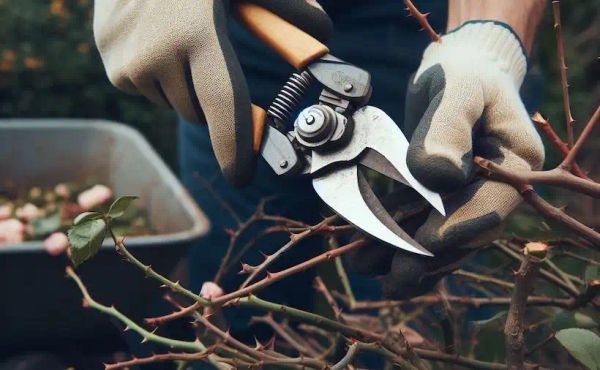When is the Best Time to Prune?
Late winter or early spring is the ideal time to prune most roses. Look out for the buds starting to swell, as this indicates that the roses are exiting their dormant state. For climbing roses, it’s best to prune them right after their blooming period, as they typically flower on the previous year’s wood.

Throughout the summer, remember to remove any dead or diseased branches, as well as branches that cross each other within the bush.
How to Prune Your Roses Step-by-Step
- Remove Remaining Leaves: Clearing away the leaves will allow you to inspect the structure of the bush and spot any hidden pests or diseases.
- Start with Dead Wood: Cut off any dead wood, making sure to go back to healthy tissue.
- Open Up the Center: Prune any crossing branches to prevent damage and disease, aiming for a vase-like shape.

- Eliminate Thin Growth: Get rid of any growth that is thinner than a pencil to encourage stronger development.
- Prune Remaining Canes: Cut just above an outward-facing bud, at a 45-degree angle, to promote outward growth.
- Seal Fresh Cuts: Protect your cuts from pests and diseases by using a pruning sealer.
- Clean Up: Dispose of all pruning debris properly and sterilize your tools to prevent the spread of diseases.
- Fertilize: After pruning, give your roses the necessary nutrients with appropriate fertilizers for healthy growth.
Additional Tips for Pruning Success
- Use Sharp Tools: Ensure your pruning tools are sharp and clean for precise cuts.
- Regular Inspection: Keep an eye on your roses, checking for signs of pests or diseases, and prune as needed.
- Variety-Specific Care: Remember that different rose varieties have specific pruning needs, so make sure you understand the requirements of your specific roses.
Pruning is essential for maintaining the health and vibrancy of your rose bushes. While this guide provides a general overview of the key steps, it’s important to adapt these steps to the unique needs of your rose varieties and the local climate conditions. Happy pruning!




